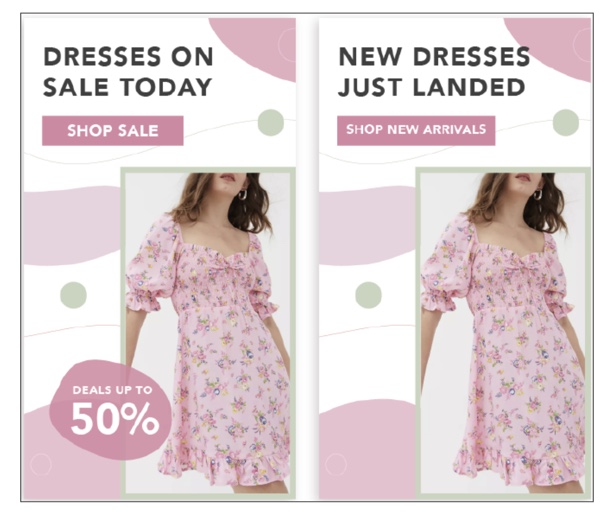
How to Combat Brand Burnout with Personalization
Your shoppers are only one scroll away from lapsing. If you’re a retail marketer, this is probably the scariest thing you’ve heard all day. What’s even scarier is that the product your shopper got tired of searching for could have been right on the next line — you really don’t want brand burnout.
Brand burnout means that your shoppers — no matter where they are in their lifecycle — are getting tired of your brand. There are a few specific factors that cause this that we’ll look at later, but it all really boils down to a lack of convenience.
Convenience is quickly becoming the most important goal of a brand’s marketing program. Not only could the lack of it cost you a buy, but it’s also eroding your brand’s value over time with shoppers. Shoppers have come to expect an incredibly high level of convenience and personalization from every experience they encounter online, and you can’t let your brand’s experiences feel like a dinosaur.
For example, think about your Netflix profile. As you continue to watch, you don’t have to look far for something new — your preferred genres (and subgenres) are right at the top and change over time as your preferences change to anticipate what you’ll want to see next. For example now, I’ve got “Binge-Worthy TV Mysteries” and “British TV Comedies” right where I need them. Last month, it was “Casual Viewing” and “Sci–Fi Thrillers.” When my preferences changed, my experience changed before I had to spend more time searching than watching.
So you can see that if you want to get convenient, you need to get personal. This isn’t just important for getting shoppers to convert, but it’s important so you can build trust with your shoppers and build those relationships over time with a deep understanding of their in-the-moment interests and preferences as well as what they love about all the details of your product catalog. Each moment and experience with your brand needs fresh and timely outreach so shoppers don’t start to lose interest.
While personalized recommendations are at the heart of offering shoppers convenience that will always keep them engaged, there are a few other areas that could be contributing to the dreaded brand burnout. And with a few marketing tricks and tips, you can combat the endless scroll and ultimate bounce to help shoppers discover, explore, evaluate and buy in a way that’s convenient for them.
3 Bad Actors Contributing to Brand Burnout
1. Stagnant communication
If shoppers keep getting communication from your brand that isn’t relevant to them, they’re going to hit the unsubscribe button — quickly. For instance, last week a brand that I’ve bought from twice sent me an email with menswear. I’ve never bought menswear, nor have I shown an interest in it, so I unsubscribed. I’m not interested in seeing daily recommendations from a brand for clothes that I don’t want or need. Sending communication that isn’t tailored to shoppers eats into your subscriber list and erodes brand trust by showing that you don’t have the right handle on your shoppers’ information.
2. Too much (and too little) contact
Sometimes, less is more. Shoppers love to hear from you — but maybe not every day, and maybe not in their inbox. With every extra email you send or every extra ad you serve, you’re running the risk of contributing to an irritating experience, thereby causing brand burnout. Alternatively, if you’re sending emails to a shopper who spends two hours a day surfing around Pinterest, you’re wasting time by not delivering your products in the context that they’re asking to see it.
3. Overwhelming Sites
We’ve all been there — you have a brand that you love, but the idea of searching and searching for what you need is too exhausting, so you just go elsewhere. For instance, I’m going to a destination wedding in a month and need a dress to wear. After scrolling around for about 20 minutes with a brand that I’ve purchased from more than once, I couldn’t find exactly what I needed. I jumped ship, Googled what I needed and found an alternative with a brand that was new to me. The next day, that new brand sent me recommendations for resort wear and wedding guest dresses. I went with the new brand. An overwhelming site is a make or break, even for loyal shoppers.
4 Strategies to Combat Brand Burnout
1. Nail the what, when and where
An important part of getting convenience right is being prescriptive about the what, when and where of your marketing messages. Far too often, retailers send everything to everyone (hello, batch emails). You’ll likely never be able to remove batch and blast emails from your marketing program entirely, there’s a lot that you can do to both decrease your reliance on batch emails and contribute to a cross-channel strategy that communicates with shoppers where they want to be communicated with, from their inbox to Instagram. Like we talked about above, staying convenience means meeting shoppers where they’re spending time and likely to convert.
You should take the time to understand different customers’ preferences in terms of timing and channel. Looking at channel choices, consider all of the channels on which you can reach your customers and evaluate factors like their likelihood to unsubscribe from emails in order to determine the best place to reach them.
2. Make the most of your ecommerce site with personalization
Your ecommerce site is a powerful channel for personalization. Shoppers have a high intent to buy because they’re exploring your site. So why not surface the best of your products to the shoppers that will love them (before they scroll away)?
You should greet returning identified site visitors with customized pop-ups and banners that feature relevant recommendations based on their past browsing behavior or predicted affinities. For example, you might feature products site visitors viewed during their last session, highlight top products for which shoppers have a predicted affinity, connect to personalized messaging featured in emails visitors received or share special messages based on characteristics like lifecycle stage
These personalized pop-ups provide an easy way to direct shoppers’ attention and create a more individualized experience from the moment shoppers land on your site.
In fact, by leveraging on-site personalization, the Lane Bryant team was able to increase revenue and lower abandonment rates.

Want to level up? On top of category-specific messaging for shoppers who have a demonstrated preference for a certain category or product, you should also layer in even more ecommerce personalization. For example, if I’m more likely to shop around the sale section I should receive onsite messaging to offer a compelling nudge. But for a shopper who usually doesn’t need a discount to convert, you should surface new arrivals. Lane Bryant saw at least a 73% lift in conversions against a holdout group on their ecommerce site by using intelligent modals that surfaced key messages and offers for a select group of visitors according to onsite behavior and predicted affinities.
3. Get predictive with personalization
When humans are behind the wheel, we see that someone bought a shirt and begin to recommend other shirts or perhaps even shorts to go with that shirt. But whatever the case, the recommendations are very narrow. It’s a whole other story when you hand the reins over to technology, which can cull large amounts of data and use predictive models to deliver much broader and smarter recommendations, for example by looking at category affinity predictions and common co-view behaviors from similar customers.
Targeting customers based on these types of predictions can help you engage with them in a more proactive way rather than just reacting to what they do. Proactive engagement is extremely important at a time when customers are looking for highly personalized, curated experiences. In fact, as your predictive models get smarter over time, you can even use them to emulate the ultimate value-add retail experience — the small shop owner who knows her customers so well that she calls them when something comes in that she thinks they’ll like.
Predictive technology allows you to use the customer data you’re already collecting in a more meaningful way by making smarter decisions and always keeping your communication fresh.
See it in action
Check out our conversation with the winner of Most Powerful Application of Personalization in the 2021 Retail Regeneration Awards here. The team activated their retail data for end-to-end 1:1 personalization — from recommendations to messaging. Not only did the team see a 50% lift in email conversion, but they also boosted their repeat purchase rate every month to keep things fresh for their loyal shoppers.
Keep your shoppers engaged for life
By keeping things fresh for shoppers and creating experiences that meld to meet them on their terms, turf and timeline you can stop the brand burnout and keep shoppers coming back again and again.




